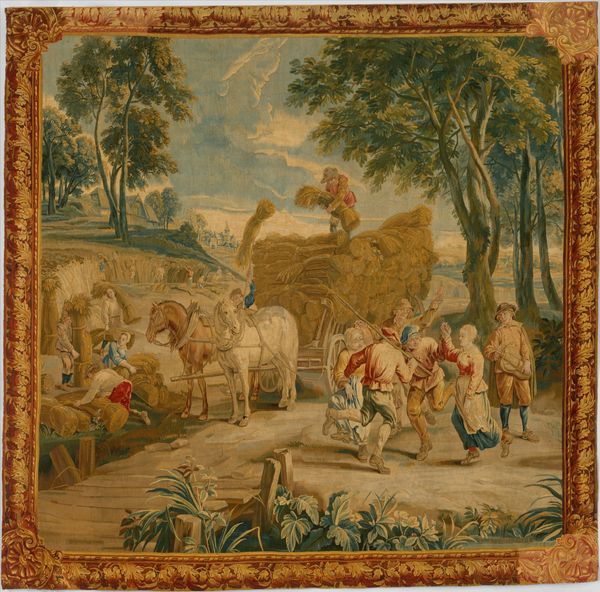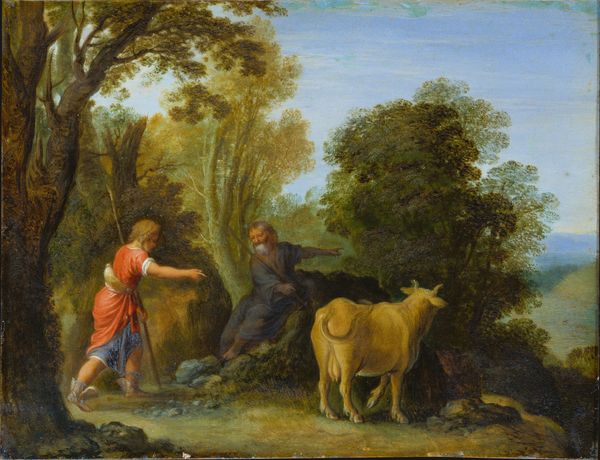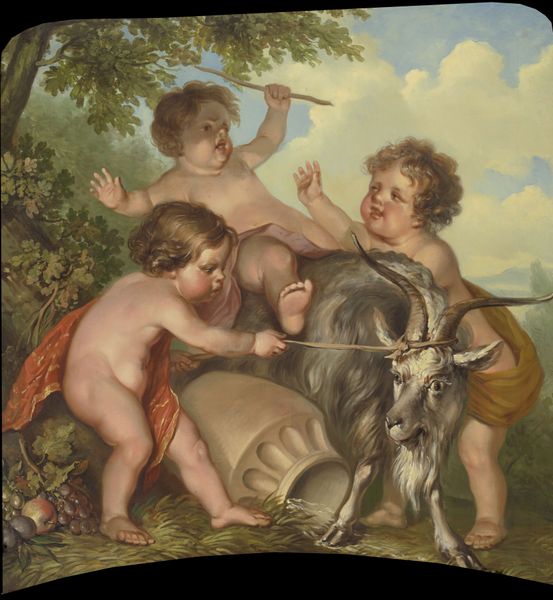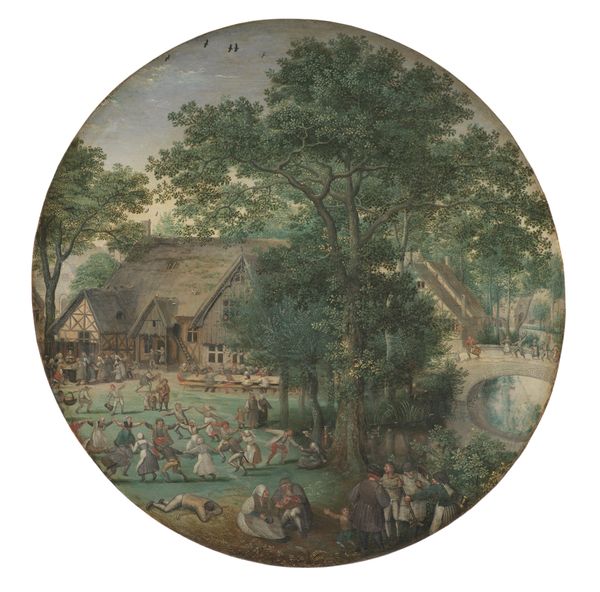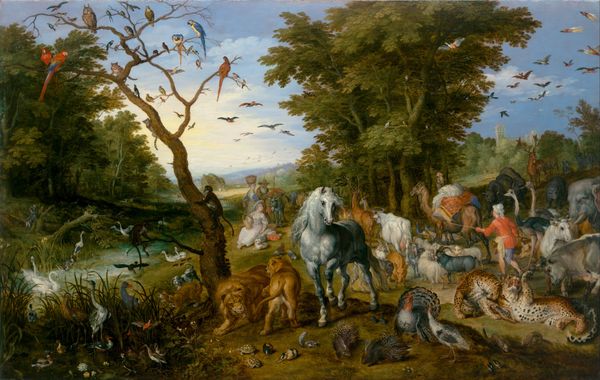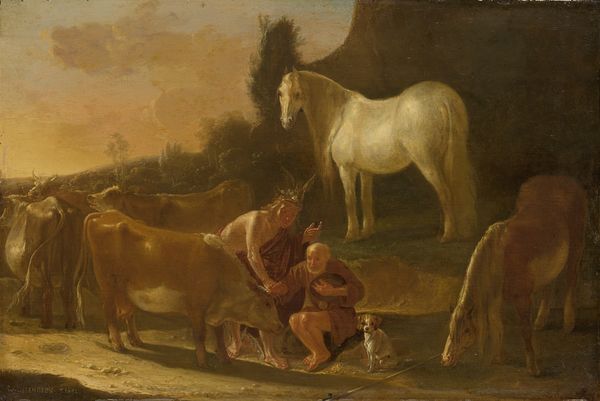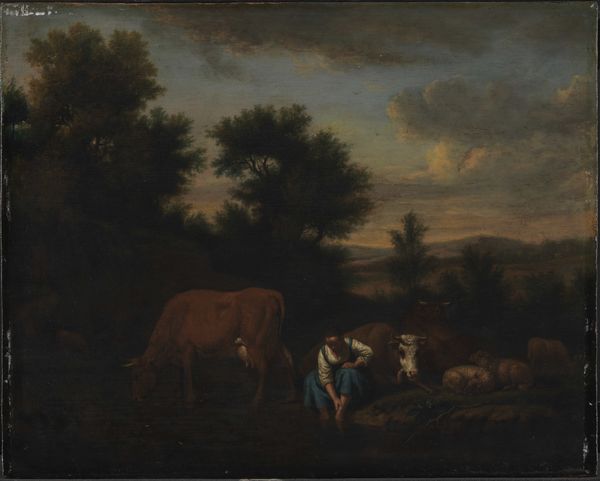
Country Scene with Milkmaid and Children Playing with Armour_ March and April c. 1620 - 1630
0:00
0:00
painting, oil-paint, oil
#
baroque
#
animal
#
painting
#
oil-paint
#
oil
#
landscape
#
figuration
#
oil painting
#
child
#
genre-painting
#
realism
Dimensions: diameter_ 27.8 cm
Copyright: Public Domain
Curator: The piece we’re observing is "Country Scene with Milkmaid and Children Playing with Armour_ March and April," an oil painting made circa 1620-1630. The artwork resides here at the Städel Museum. Editor: It strikes me immediately as a study in contrasts. The round frame feels almost like a porthole into a bygone world, rendered in that characteristically muted palette. The figures seem caught between leisure and labor. Curator: Precisely. Its genre painting and offers insight into daily life. It makes one think about the means of artistic production at that time. Consider the preparation of the oil paints. Pigments were laboriously ground and mixed. What impact does such intense material creation have? Editor: It also begs the question: who was the patron? Genre scenes like this gained popularity amongst the rising merchant classes. To own such artwork declared specific notions about landscape, the rural workforce, and the ideal vision of social harmony. Curator: Indeed. Think about the depiction of the milkmaid. There is something idealised there and an ideal of pastoral labor. And even consider the choice of materials itself, oil paint on... presumably, a wood panel. The selection itself indicates value, investment, and an interest in durability that conveys a meaning to later audiences. Editor: The presence of armour next to these rural folk reminds us how militarization underpinned the structures of power. Also consider what institutions shaped its preservation and display, eventually bringing it to this museum, thus affecting our understanding today? Curator: A valid point. Without these socio-political influences, our access, the context of meaning-making, and the act of studying it in detail wouldn’t be possible. This interplay emphasizes labor both within the artwork's narrative and the extensive effort required for its very existence. Editor: Exactly. Examining art through this framework—considering institutions, the artist’s intentions, and societal influences—provides a more profound and intricate understanding. Curator: Absolutely. Focusing on materials and techniques adds tangible weight to our interpretation. We have learned the impact of materiality on the subject in ways that also involve contemporary cultural understandings. Editor: Right, the way those visual and material narratives inform what art might become across the ages.
Comments
No comments
Be the first to comment and join the conversation on the ultimate creative platform.



